
Date of visit: October 6th, 2017
Weather: Cloudy
Hello, everyone! This is Narorin♪
In this Narorin Report or Naroripo, I will tell you about my visit to the Ornithological Research Building and Flying Cage, Wildlife Damage Management Group, of the Central Region Agricultural Research Center(Kanto, Tokai and Hokuriku Regions), NARO (CARC/NARO) in Tsukuba, Ibaraki Prefecture.
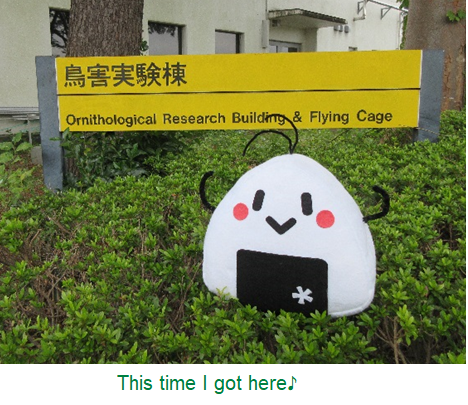
Here they conduct research about prevention of wildlife damage in agricultural lands and management of wildlife population.
In order to reduce the damage from the crows that consume agricultural crops such as fruits, they conduct research on the behavior and ecology of crows and develop countermeasure techniques.
First, they introduced me the technique to prevent crows from entering orchards. It is called 'Kuguren Tegusu-kun'.
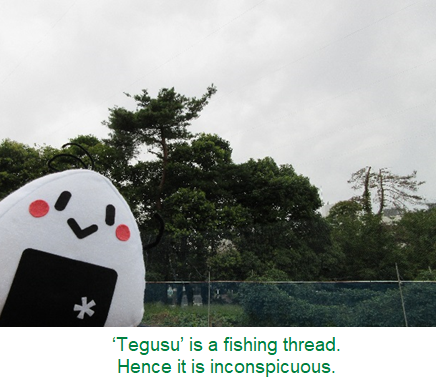
Actually, even though it is not visible, 'Tegusu' is stretched over my head at one meter interval. They tried to test various intervals of 'Tegusu' and found out that the one meter interval is the most practical. As a crow spreads its wings about one meter, this interval would be hard to enter.
They use 'Tegusu' because crows dislike lines hard to see. To examine the effectiveness of 'Kuguren Tegusu-kun' in outdoors, the research team checked the number of invasions of crows for half a year. They found it to be approximately 2200 times during which 'Tegusu' is not set up and nine times after setting up 'Tegusu'. The difference in the number of crow invasions is quite surprising!
The green poles that support the 'Tegusu' at both ends of the field is very flexible, so even if the 'Tegusu' gets out, it will be bent to a reachable height and it will be easy to repair!
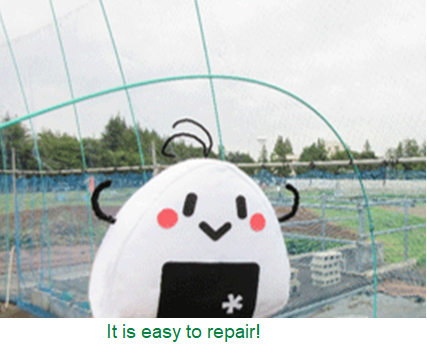
The advantage of this technique is that it can be easily assembled with a small number of people using materials available anywhere in stores. It is important to let farmers think that they can do this by themselves!
The innovative countermeasure techniques are provided to everyone on the site by means of installation manuals. Check here for Manual page link (in Japanese)
In order to develop such countermeasure techniques, it is necessary to study the extent of damage prevention under actual setting.
I think it must also be done under certain conditions. When I was thinking about this, they showed me this huge cage!
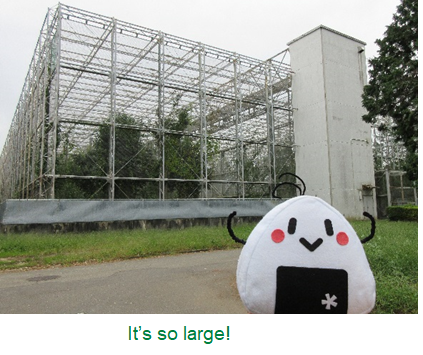
Inside this cage they are keeping wild crows in captivity and doing research.
Currently, there are 18 jungle crows and carrion crows in this cage.
This cage is the largest in the country. Height is 12 meters! It is so big.
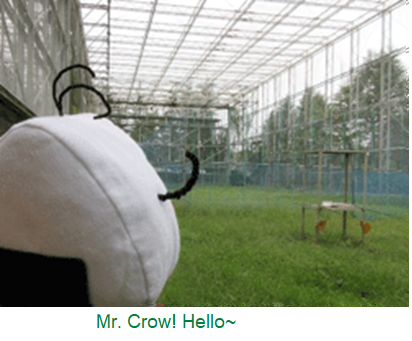
When I entered the cage, the crows flew far away!
Dog food is used as food for crows. Since it is dry and hard to rot, it is safe to feed the crows during weekends.
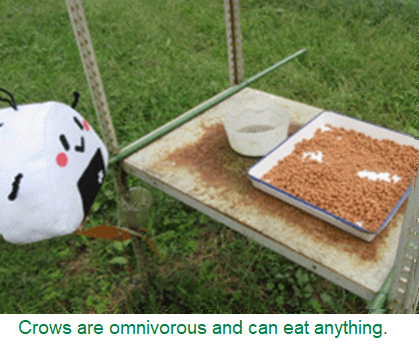
They are researching about the effectiveness of lines in combination of heights and widths using white kite strings.
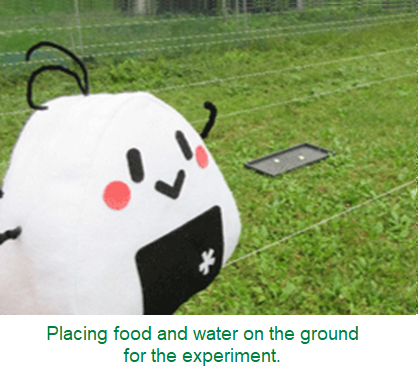
Camera is installed in the window on the 3rd floor and behavior of the crows is monitored.
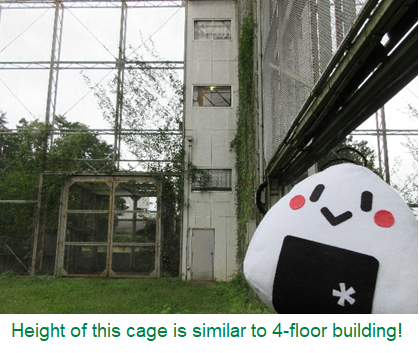
There was also a plastic greenhouse. It is so spacious that it is possible to conduct various experiments inside!
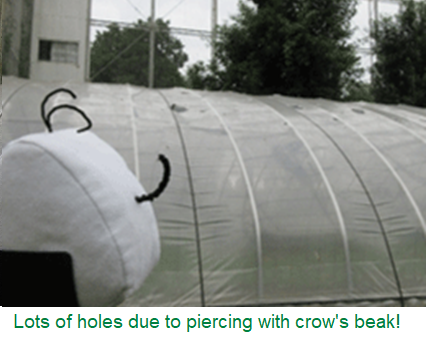
It was very interesting to see inside the huge cage!
Besides that, they also determine what animals would feed from the remains of vegetables and fruits. It is important investigation, since it is not possible to take measures unless we know what kind of animals feed on these crops.
Each animal eats in different ways, but crows and civets often leave similar bite marks. A camera is installed to investigate such case.
A masked palm civet which came to a fig tree near the laboratory building is shown below.
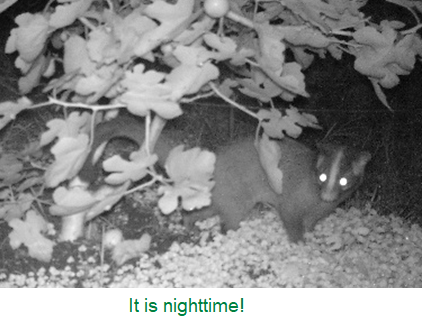
The installed sensor camera got a shot perfectly! The camera reacts with infrared when it moves, which is a mechanism to shut off the shutter.
Here I am beside the fig tree.

Narorin in the spot!
The sensor camera takes very clear shots!
Then I took a picture with "Yoshida-san" who was my tour guide in this visit.
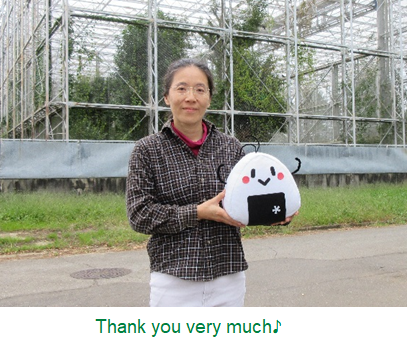
I've been thinking that crow is a little scary as it is huge and black in color, but I have heard that both genders of crow are nice and excellent in child-raising, so it should be easy to get along with them!
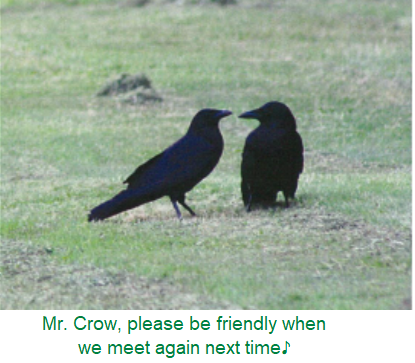
Now I'm wondering where to go next...
Check here for further details about the Central Region Agricultural Research Center(Kanto, Tokai and Hokuriku Regions), NARO.